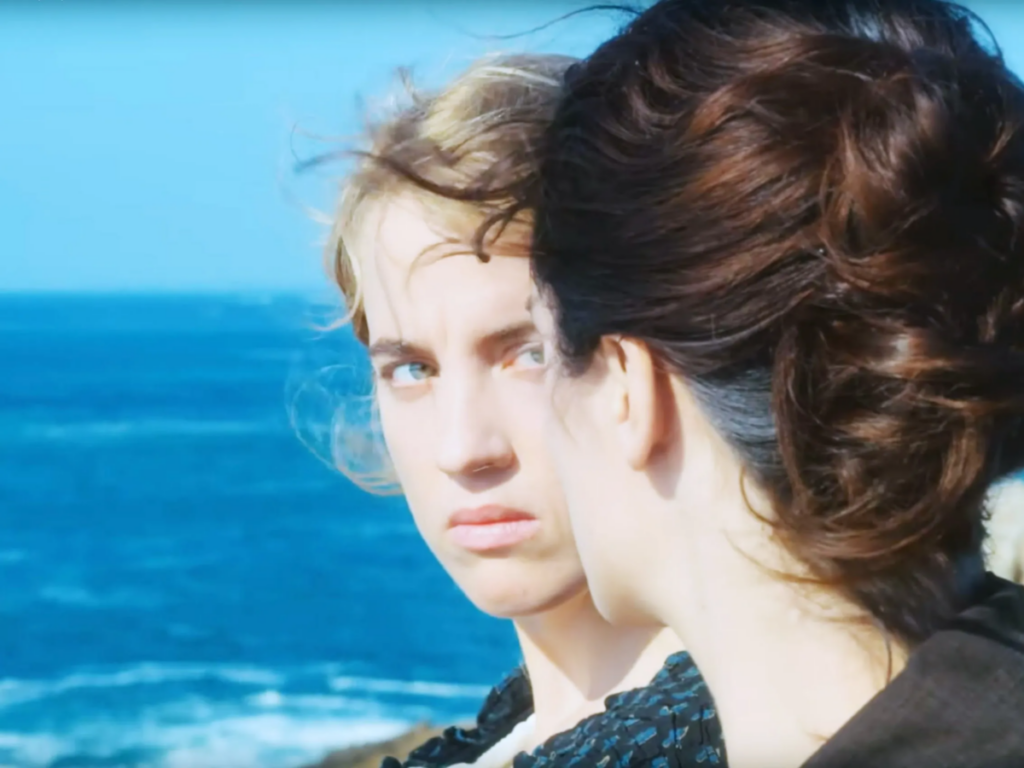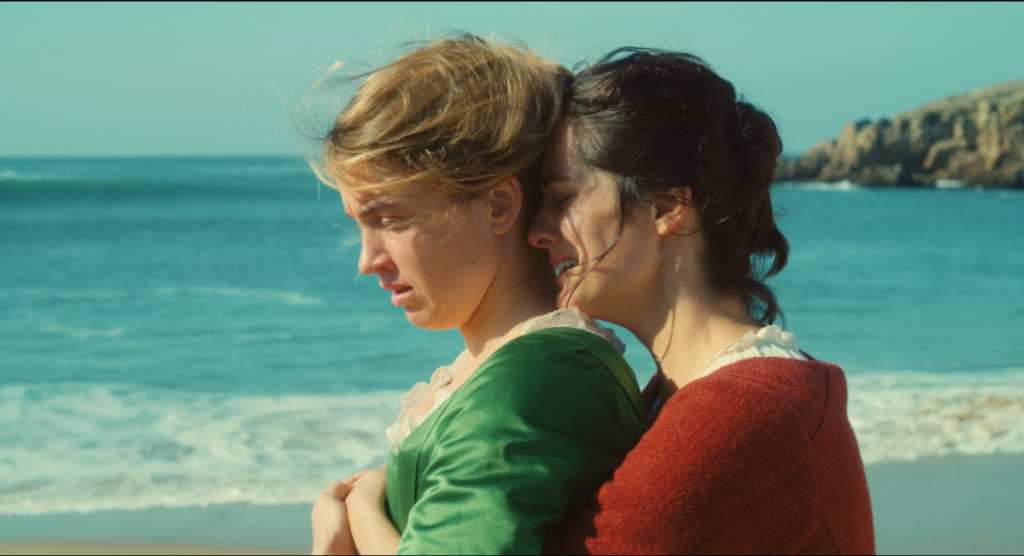Portrait of a Lady on Fire is a masterclass on how to film a queer romance movie. I’ve seen many other great films like it, but none with the same attention to detail and commitment to its heartbreaking realism as Portrait. A big part of it, in my eyes, is the collaboration between director Céline Sciamma and cinematographer Claire Mathon and their captivating decision to accentuate romantic and sexual tension through cinematography.
Sciamma and Mathon extensively used long takes, handheld shots, slow pans and tilts, and delicate dolly shots to “render [Marianne and Héloïse’s] attraction palpable on screen” (Film Comment, 2020) in a way that fully accentuates and mirrors the women’s journey from love to heartbreak.

In the film, we get to see the slow build up of the women’s forbidden attraction blossom into lust and romance. The performances of actors Noémie Merlant and Adèle Haenel certainly have a lot to do with the message of sensual queer love, but the camera often lingers in the private moments, a vouyeristic figure that imitates our predisposition to wonder… “What’s going to happen next?!” These long takes emphasize the intimacy of the women’s relationship and according to Mathon, were intended to give the film a “painterly touch.” (FC, 2020) Interestingly, Mathon even admits to visiting art museums featuring 18th century paintings in preparation for shooting the film to get an idea of what style she wanted to imitate in the cinematography. This technique was also employed, albeit in a contrasting way, in the final shot of the film when Héloïse is listening to the Presto from “Summer” in Vivaldi’s Four Seasons at the concert, showcasing the power of memory through music.

Other techniques Mathon used in Picture to accomplish intimacy include dolly shots, pans, and tilts. Mathon talks about the use of pans in relation to the slow gaze between the women on the windy cliff in her interview with Film Comment, saying “The strength of that panning shot lies in the fact that the camera becomes a human observer there and moves in rhythm with the actresses.” The same could be said when the camera tilts up and down when the women handle props in the film and slowly moves forward in careful dolly shots when the women are spending time together on the beach.

The real dichotomy, though, is Mathon’s usage of a handheld shot in the emotional climax. Marianne and Héloïse, coming to the bitter realization that their time together is ending, apologize for arguing and break down crying in a moment that encapsulates the horrid cruelty of society’s sexist and homophobic expectations of women during that time. Mathon contrasts this moment with the cliff scene by mirroring the women’s emotional vulnerability with a shot that is shaky and unstable. It only further highlights the sad ending for the women.

I think the camera movement sort of mimicking their relationship is so interesting. I also noticed a lot of camera movement and long takes and, like you said, the slowness that comes from it. I think it was a really interesting contrast because time seems to be moving really slowly in the film but the reality is they do not have that much time together, no matter how long the individual moments seem to last. I also felt like having such long takes and long moments related to memories, that when we have memories of people there are specific moments we cherish and remember over others. It also felt like how we may remember falling sin love or building relationships, moment by moment until it happened. I also love that you used the word voyeuristic because in those long takes of them looking at each other it does feel like we are intruding on an intimate moment. I also love the “painterly touch” you brought up because the film does have a certain artistry to it, especially in the color. Except for the green dress we see Heloise in dark blues representing her somberness while Marianne is in red representing her passion and freedom and Sophie is in orange often representing her warmth and kindness.
I thought your point about the long shots increasing the feeling of intimacy was felt a lot throughout the film. Long takes were very popular in this film, which made it feel slower but it matched the emotion of the film. You pointed out a lot of ways the camera was used to show emotion like using a handheld camera for the emotional climax. I thought this was very interesting and contributed to the strong emotion and high intensity of the scene. Additionally, I liked how you mentioned that the cinematographer wanted the camera to almost become a human in moments and did certain camera movements to mimic that. The point about her visiting art museums was very interesting. Many of the shots in the film felt like paintings so that’s cool to know that she did a lot of background research and that her shot style was very intentional. There were many subtle techniques in this film that had a lot of intention and thought behind them that viewers might not realize unless they really think about it. Also, your use of the word “voyeuristic” made me think of the movie Rear Window and how at times in this movie it felt like as a viewer we were Jeffries and looking in on a private moment.